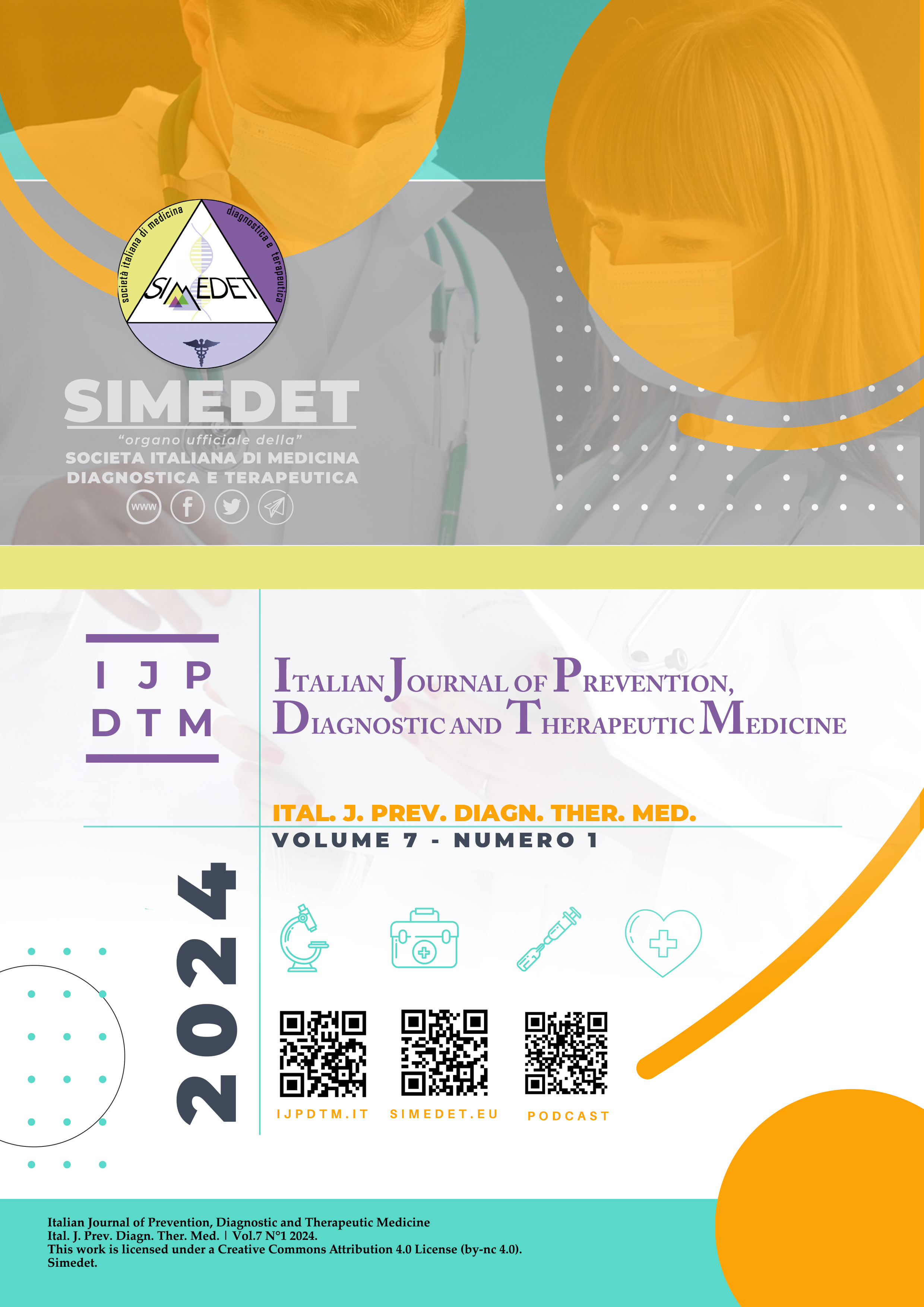Role of laboratories in unconventional events
Main Article Content
Abstract
Under the definition of "unconventional events", all those characterized by the malicious dispersion into the environment, due to human errors or natural events, of those elements potentially linked to mass massacres which are currently included in the acronym NATO CBRN or , preferentially in the civil sector, in the analogous NBCR: this acronym therefore includes elements of a chemical, biological or radiological-nuclear type.
Downloads
Article Details

This work is licensed under a Creative Commons Attribution-NonCommercial 4.0 International License.
References
Kovats RS, Bouma MJ, Hajat S, Worrall E, Haines A (2003). El Niño and health. Lancet. 362(9394): 1481-1489. doi: 10.1016/S0140-6736(03)14695-8. PMID: 14602445 Review.
Flahault A, de Castaneda RR, Bolon I (2016). Climate change and infectious diseases. Public Health Rev. 37: 21-23. doi: 10.1186/s40985-016-0035-2. eCollection 2016. PMID: 29450063.
Asadgol Z, Badirzadeh A, Niazi S, Mokhayeri Y, Kermani M, Mohammadi H, Gholami M (2020). How climate change can affect cholera incidence and prevalence? A systematic review. Environ Sci Pollut Res Int. 27(28): 34906-34926. doi: 10.1007/s11356-020-09992-7. Epub 2020 Jul 14. PMID: 32661979 Review.
North Atlantic Treaty Organization Allied Engineering Publication. NATO Standard AEP-66. NATO handbook for sampling and identification of biological, chemical and radiological agents (SIBCRA). Edition A, version 1. NATO/PfP Unclassified Document.
North Atlantic Treaty Organization Allied Engineering Publication. STANAG 4632, Standardization Agreement (STANAG). Deployable NBC analytical laboratory. Version 1. NATO/PfP Unclassified Document.

